The Church of the Assumption of Virgin Mary (Agia Triada)
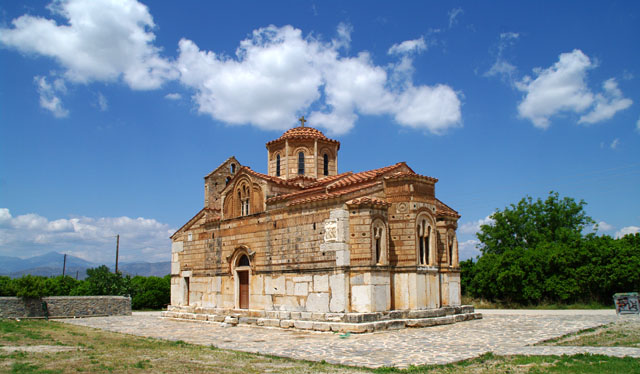 |
||
|
It is supposed to have been one of the most significant Byzantine temples, during the period of the Comnenians, both for the prefecture of Argolida as well as the whole of Greece. It still holds some morphological similarities with the church of "Agia Moni" in Nafplio, which immediately creates an association between the two. The location in which it is built was named "Vouzi", but presently utterly forgotten or unspoken of by the residencies. |
||
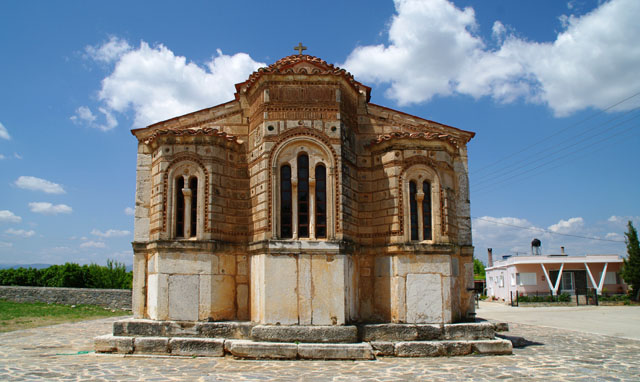 |
||
|
There seems to be much speculation surrounding the exact date of the church's erection with the most prevailing one among scholars being either at the end of the 12th century or the early 13th one. The temple's frescoes are placed at a period around the end of the 13th century or even at the dawn of the 14th century; however they could have been created much later than the actual assembly of the temple itself.
The Latin Bishop of Corinth Willen Van Moerbeke, Dominican, orientalist and philosopher had resided for a number of years in the monastery, after having been anointed as a bishop by Pope John the 21st, in 1277. The mention of Moerbeke's name and acts is apparent among many French historians, who describe him as a wonder scientist of his time. Perhaps the alternative, native name of the village, "Merbakas", is so, honoring his name. |
||
|
During the reign of the Venetians, the church is conceded to the Bishop "Hortatsis" of Rethymno, Crete. Between the years 1715-1770- the last period of Turkish reign- the church's management is granted to the metropolitan Bishop of both neighboring towns, Argos and Nafplio. Circumstantial to none is the recorded information gathered for the following years, regarding the fate of the cloister. It seems to have been structurally around in 1833, without any monks or cells whatsoever. Eventually, the area surrounding the monastery and the temple was trodden underfoot. Still, to date, there are but a handful of locals, who know the existence of the church or its active role throughout the centuries, from the moment it had been built. |
 |
|
|
For quite some years, the churchyard had been used as a cemetery of the township "Agia Triada" or in translation "Holy Trinity", yet with the cemetery removed, concerted efforts have been made to restore the area as well as the church itself and provide accessibility to any visitor. The Assumption of Virgin Mary Church stands at the entrance of the village, following the route from Nafplio. The church has such measurements (15, 67x8, 45) and is potentially built upon ancient grounds, seeing that the church counts a number of tombstones, fragments of marble and ancient Greek dwelling stones. |
||
 |
||
|
Praiseworthy is the combination and the theme exchange of ancient material, decorative elements and Byzantine flair on the outside of the church. Architecturally, it is a complex cruciform temple, four-columned, including a dome. It has got four entrance-exit gates and its windows have been adorned with a serrated row of tiles. The decoration seems to be encompassing the whole of it, all four walls separated though into two main lines; the first starting off just in the rim of the gates and the second moving on from the point of the roof's elevation.
From the church's foundations to the first main decorative line, the structure has been built on ancient stones. The second line onwards has been erected on limestone. The temple's decorations in many parts present varied embossed images of fish, animal and oak leaves. The north eastern corner of the church reveals a decoration of an embossed head, encircled with rays, symbolizing the sun; the northwest side of the church presents a tombstone with a relief depiction of a couple, the west entrance gate holds a Roman inscription and the southern wall manifests a solar clock; all works of the church's ornamentation for the visitor to behold. |
||
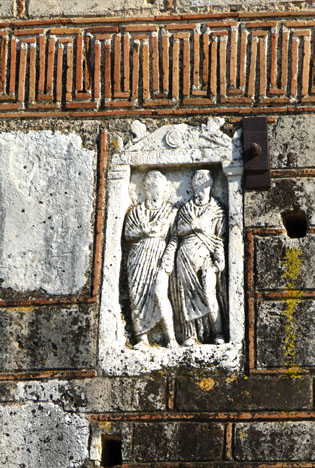 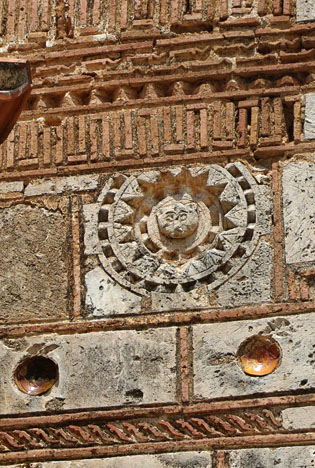 |
||
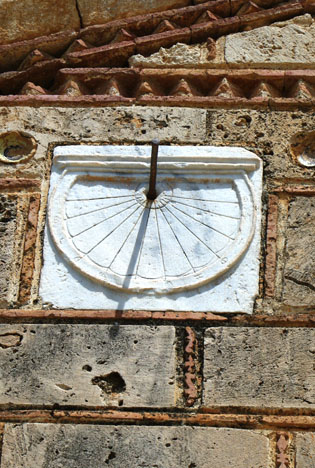  |
||
On the inside, extensive wall painting damage has been inflicted upon the church, possibly due to candle use, rendering them blurred or blackened. There is so much this conjecture that a possible fire blow might have been held responsible for this damage, however there is no witness to support this case.
Despite that, the Assumption of Virgin Mary Church is considered of the most significant Byzantine temples-monuments not only of the area it is located but of the whole country as well. |
||
| The exact location of the Holy Church can be tracked in the section: Map. |
||


